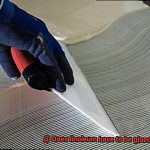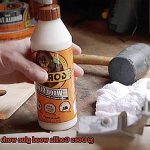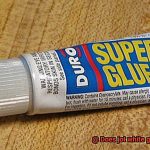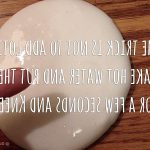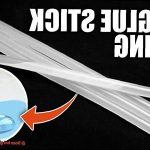Repairing metal components can be a tricky task, especially when you need an adhesive that can withstand the toughest elements.
And let’s face it, nothing is tougher than gasoline. So, the burning question on everyone’s mind is whether JB Weld, that trusty epoxy adhesive we all know and love, can stand up to the challenge.
Whether you’re a DIY enthusiast or a seasoned mechanic, having a product that can provide reliable and long-lasting repairs is essential. In this blog post, we’re going to dig deep into the world of JB Weld and its resistance to gas.

So. buckle up and get ready to uncover the truth about JB Weld’s gas-resisting superpowers.
What is JB Weld?
Contents
This epoxy adhesive has taken the world by storm, earning its reputation for unmatched reliability, exceptional versatility, and effortless application. Known as a “weld in a tube,” JB Weld is your go-to solution for bonding and repairing a vast array of materials. Let’s delve into the extraordinary world of JB Weld and uncover its many advantages.
Unleashing Unmatched Versatility:
JB Weld’s claim to fame lies in its ability to seamlessly bond various materials together. No matter if you’re working with metal, wood, plastic, ceramic, or even glass, JB Weld has got your back. Its robust formulation guarantees that it can tackle any project or repair job with ease.
Curing Under Any Circumstance:
One of JB Weld’s standout features is its ability to cure and bond under different conditions. It doesn’t matter if the surface is dry or even submerged underwater; JB Weld will deliver an unyielding bond. This makes it an ideal choice for both indoor and outdoor applications.
Conquering Extreme Temperatures:
When it comes to temperature resistance, JB Weld truly shines. Once fully cured, it fearlessly withstands high temperatures up to 550°F (287°C). So whether you’re working on automotive parts, plumbing repairs, or any other application involving heat, JB Weld has got your back.
Specialized Formulations Tailored to Your Needs:
JB Weld understands that not all projects are created equal. That’s why they offer specialized formulations designed for specific applications. Whether you’re working on your car, boat, household repairs, or any other project, there’s a JB Weld variant perfectly tailored to your needs.
Gas Resistance of JB Weld
JB Weld, a renowned epoxy adhesive celebrated for its strength, versatility, and user-friendly nature, beckons us to explore its hidden talents. While not explicitly marketed as a gas-resistant adhesive, JB Weld showcases remarkable resistance to certain gases.
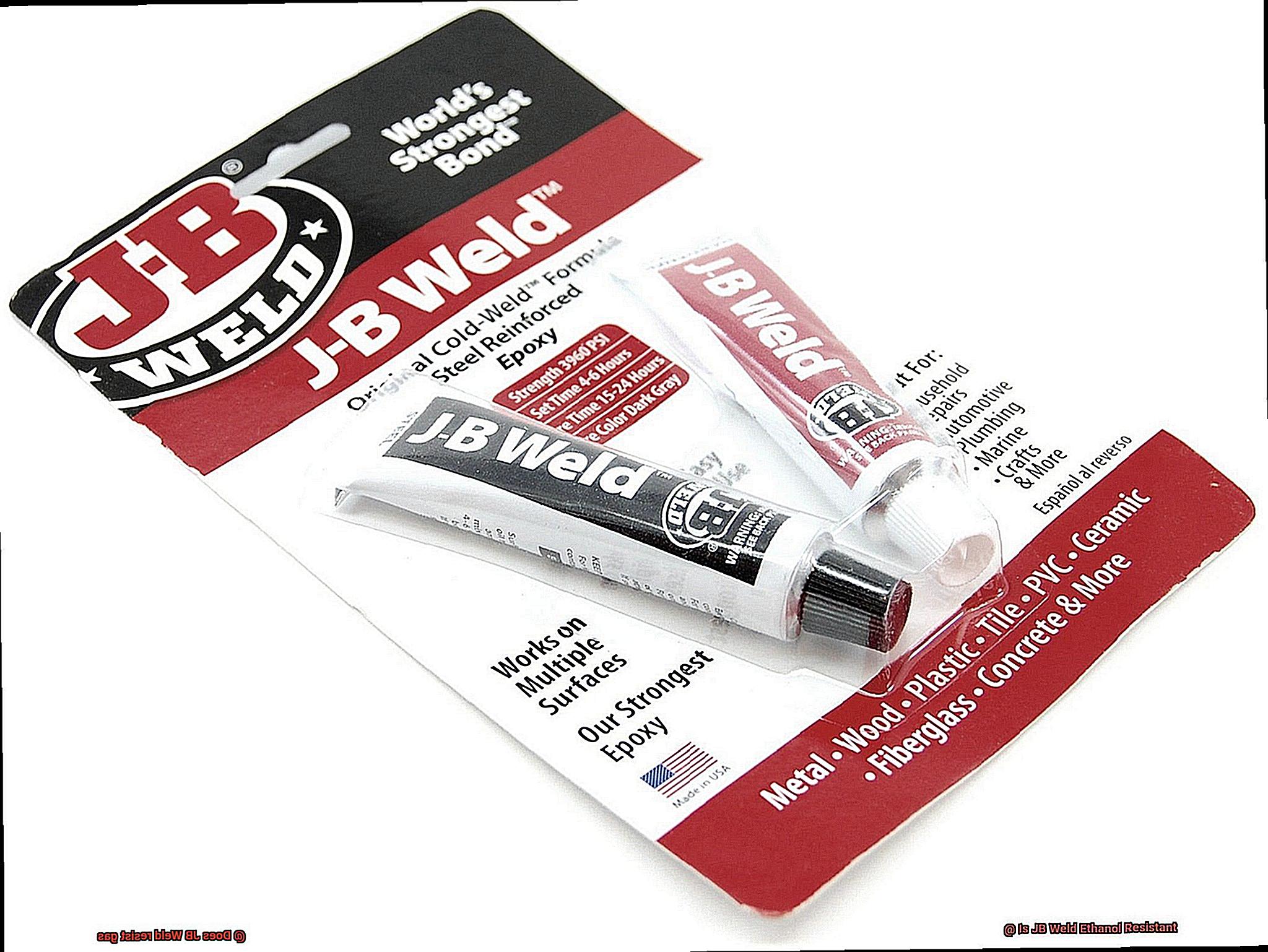
In this article, we embark on a journey through the gas resistance capabilities of JB Weld, empowering you with guidelines for secure usage in gas-rich environments.
Conquering the Fuel Frontier:
- JB Weld flaunts commendable resistance to gasoline and diesel fuel, rendering it ideal for repairing fuel tanks or automotive components.
- Even when exposed to the harsh elements of these fuels, JB Weld maintains its adhesive properties, forging an unwavering bond.
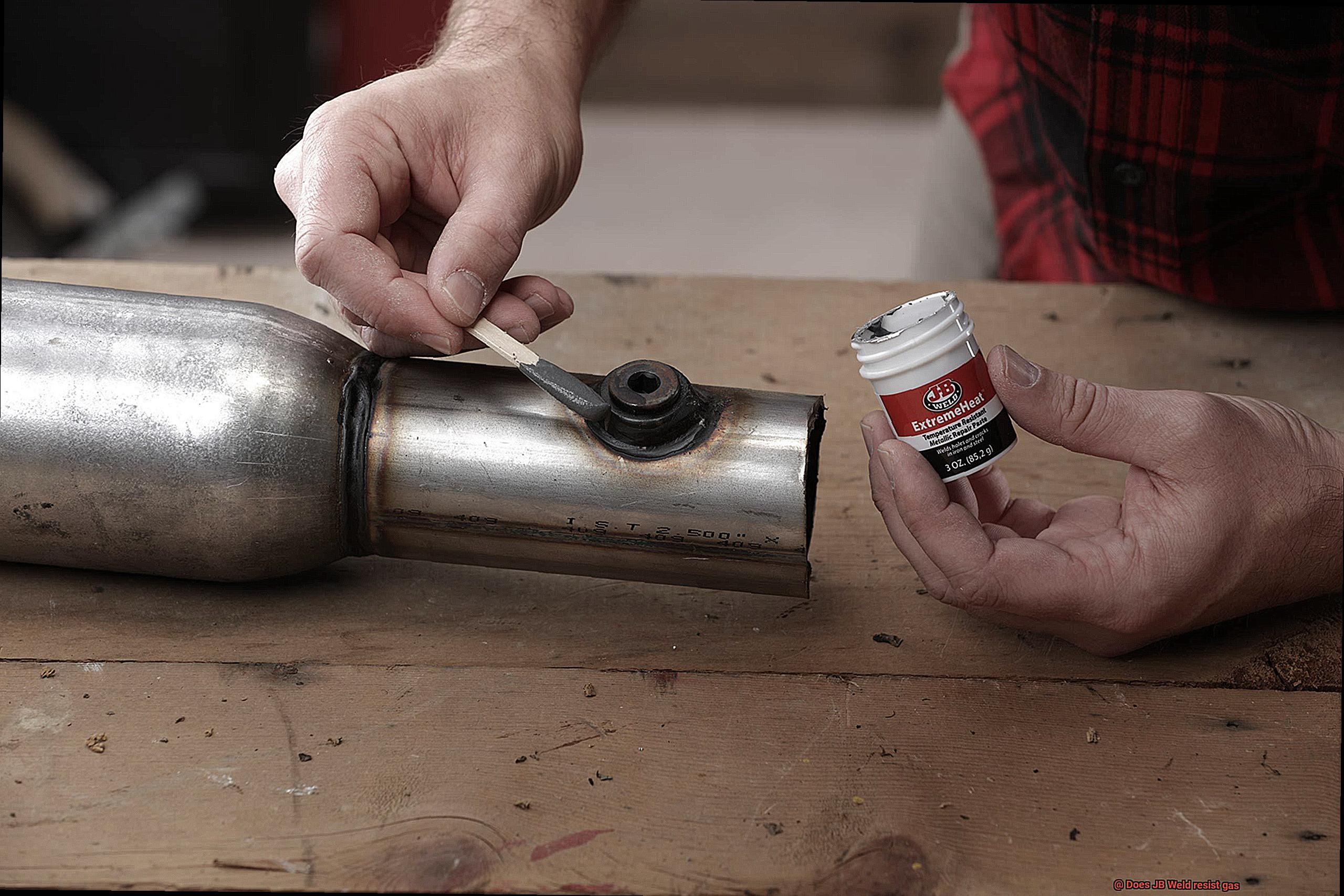
Defying Industrial Fumes:
- Automotive and industrial environments present a landscape teeming with fumes and gases that would make lesser adhesives crumble. However, JB Weld is unyielding. It triumphs over oil vapors, transmission fluid fumes, and exhaust gases with ease.
- The adhesive properties of JB Weld remain staunchly intact even when confronted by these formidable adversaries.
The Achilles’ Heel: Corrosive Gases:
- It is paramount to acknowledge that JB Weld may not thrive in the presence of highly corrosive or aggressive gases.
- These menacing gases possess the potential to weaken or erode the adhesive over time, necessitating caution and consideration.
Safe Usage Guidelines:
Surface Preparation:
- To unleash the full power of JB Weld’s gas resistance, ensure thorough surface preparation by cleansing it meticulously.
- Eliminate any contaminants or residues that may undermine the adhesive’s resilience against gas exposure.
Compatibility Testing:
- When confronted by uncertainty regarding JB Weld’s compatibility with a specific gas, seek wisdom from the manufacturer or conduct a preliminary test.
- This test will unveil whether the adhesive can endure gas exposure without compromising its unyielding bond strength.
Adhere to the Manufacturer’s Instructions:
To unlock optimal performance and gas resistance in your intended environment, adhere religiously to the curing and post-application procedures recommended by the manufacturer.
Factors that Affect the Gas Resistance of JB Weld
When it comes to adhesive superheroes, JB Weld stands tall as the undisputed champion. Its exceptional gas resistance capabilities have made it the go-to choice for countless applications. But what exactly makes JB Weld so impervious to gases? Let’s explore the factors that contribute to its outstanding gas resistance and unlock its full potential.
Temperature:
JB Weld thrives in the face of scorching heat, boasting an impressive resistance of up to 550 degrees Fahrenheit (287 degrees Celsius). However, extreme temperature fluctuations can impact its performance. Rapid changes in temperature cause materials to expand and contract, potentially leading to cracks or weakened bonds. To ensure JB Weld’s gas resistance endures, consider the operating temperature range when using it in gas-rich environments.
Type of Gas:
Not all gases are created equal when it comes to their effects on JB Weld. While some gases have no adverse effect on the adhesive, others trigger chemical reactions that weaken its bond. Corrosive gases like hydrogen sulfide or ammonia can gradually erode the adhesive over time. Understanding the specific gas JB Weld will encounter is crucial for evaluating compatibility and ensuring optimal gas resistance.
Surface Preparation:
Prepare for success. Proper surface preparation plays a vital role in maximizing JB Weld’s gas resistance. Thoroughly clean and degrease surfaces before applying the adhesive. Even the tiniest contaminants or oils can interfere with adhesion, compromising gas resistance. Don’t cut corners – make sure to diligently cleanse surfaces for a bond that stands strong against gases.
Bonding Area:
Size matters. The dimensions and area of the bond can influence JB Weld’s gas resistance. Larger bonding areas might experience more stress and strain, potentially affecting durability over time. To maximize strength and gas resistance, ensure ample coverage and employ proper application techniques.
Curing Time:
Patience pays off. Curing time refers to the duration required for JB Weld to unleash its full strength and gas resistance properties. Rushing the curing process or not allowing sufficient time for the adhesive to bond can compromise its gas resistance. Follow the manufacturer’s instructions diligently and grant JB Weld the specified duration to cure before exposing it to gas.
Chemical Compatibility:
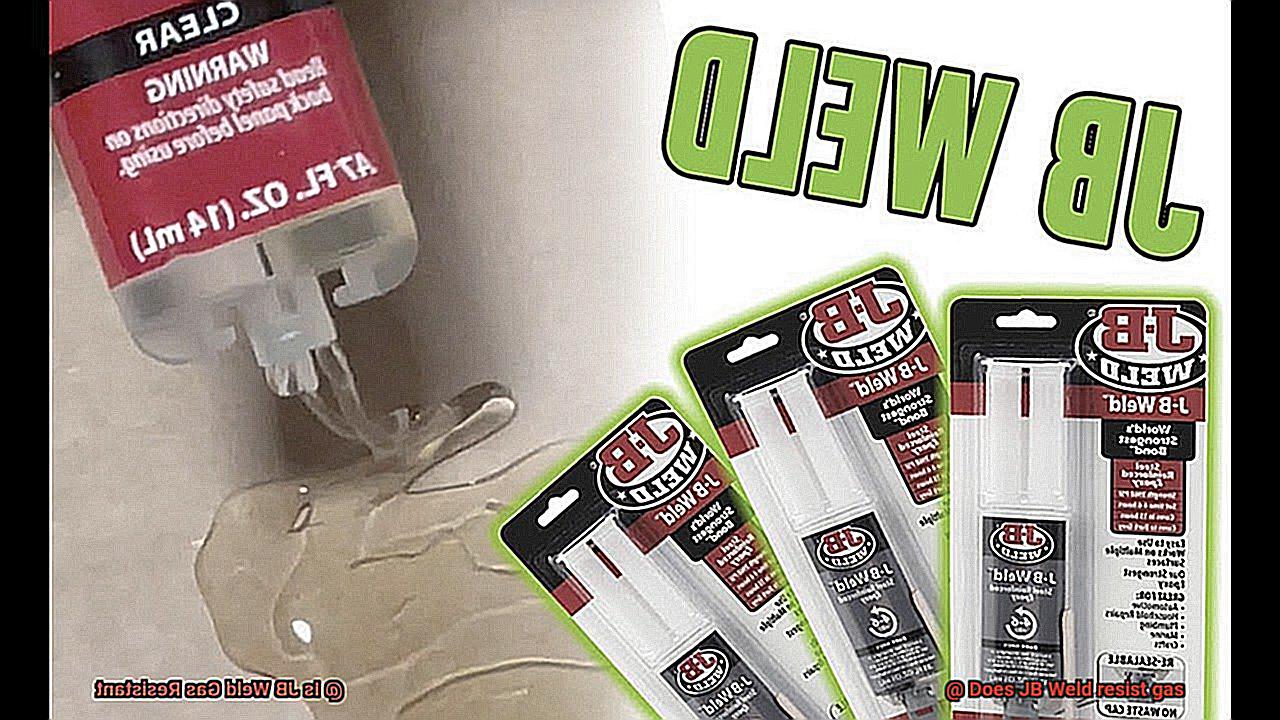
Think ahead. JB Weld may react differently to various chemicals and solvents. Consider the chemical compatibility of the adhesive with the specific gas it will encounter. Some chemicals can degrade or weaken JB Weld, reducing its gas resistance. Always consult the manufacturer’s recommendations and conduct compatibility tests before using JB Weld for any bonding application.
Testing JB Weld for Gas Resistance
Testing JB Weld is the key to ensuring its effectiveness.
Let’s first understand what makes JB Weld exceptional. It’s a two-part epoxy adhesive consisting of a resin and a hardener. When combined, a magical chemical reaction occurs, resulting in a strong bond. However, not all gases are created equal, and some can potentially weaken or break down the JB Weld bond due to their corrosive or differing chemical properties.
To conduct the test, safety should be a priority. Wear protective gloves and goggles and set up in a well-ventilated area. Apply JB Weld to a suitable substrate like metal or plastic following the manufacturer’s instructions for proper curing. Place these samples in an enclosed environment exposed to different gases, controlling their concentration and duration.
During testing, monitor the samples closely for signs of degradation or failure. Watch for changes in appearance like discoloration or bubbling, and test the bond strength by applying pressure or tension.
After the desired testing time, carefully remove the samples and assess their performance using appropriate testing equipment to measure bond strength.
Analyzing the results will determine how well JB Weld resists specific gases tested. Remember that factors like gas type, concentration, temperature, and humidity can influence the results.
Proper Surface Preparation for Optimal Gas Resistance
Before we dive into the depths of this fascinating topic, it is crucial to understand the importance of proper surface preparation in achieving optimal gas resistance with JB Weld.
Imagine yourself on a journey through uncharted territories, armed with JB Weld as your weapon of choice. But hold on. Without proper surface preparation, your weapon may not be as effective as you’d hoped. So let’s equip ourselves with knowledge and prepare for victory.
- Cleanliness: To ensure optimal gas resistance, cleanliness is key. Trying to bond two surfaces with dirt, grease, or oil in the way is like solving a puzzle with missing pieces. Thoroughly clean the surfaces you plan to bond using a suitable solvent or degreaser. Remove any unwanted substances that could hinder the adhesive’s ability to create a strong bond.
- Mechanical Preparation: Cleaning alone may not be enough to achieve optimal gas resistance. That’s where mechanical preparation comes into play. By roughening the surface using sandpaper, a wire brush, or another appropriate abrasive material, you create a slightly roughened texture. This texture allows for better adhesion and penetration of the adhesive. Think of it as giving the glue something to grip onto – like rock climbing for adhesives.
- Surface Activation: Some surfaces require an extra boost to achieve optimal gas resistance. Non-porous materials like metal or plastic may benefit from surface activation techniques such as chemical etching or priming. These methods create a more receptive surface for better adhesion and gas resistance. It’s like giving your glue superpowers.
- Drying Time: Patience is a virtue when it comes to achieving optimal gas resistance with JB Weld. After cleaning and preparing the surfaces, make sure they are completely dry before applying the adhesive. Moisture trapped between the adhesive and the surface can compromise the bond and reduce gas resistance. Follow the manufacturer’s instructions regarding drying time to ensure proper adhesion.
- Application Technique: Now that you’ve prepared the surfaces, it’s time to apply JB Weld like a pro. Start by applying an even layer of adhesive onto one surface, then firmly press the two surfaces together. Ensure proper contact and eliminate any air bubbles that may reduce gas resistance. Smooth out any wrinkles or imperfections like a master craftsman, and voila – you’re one step closer to achieving optimal gas resistance.
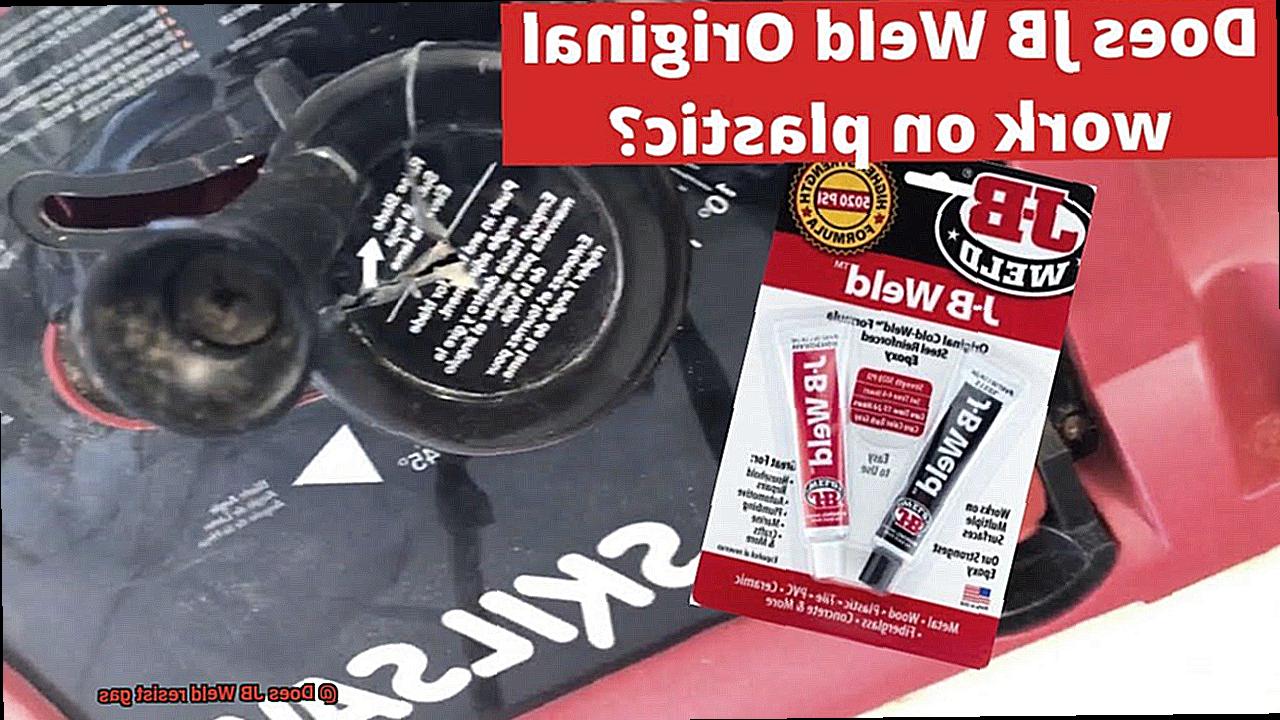
By following these steps for proper surface preparation, you are setting yourself up for success in the battle against gases with JB Weld. Remember, surface preparation is just as important as the adhesive itself in achieving optimal results. So take the time to clean, roughen, and activate surfaces – your glue will thank you for it.
Common Uses of JB Weld in Applications Requiring Gas Resistance
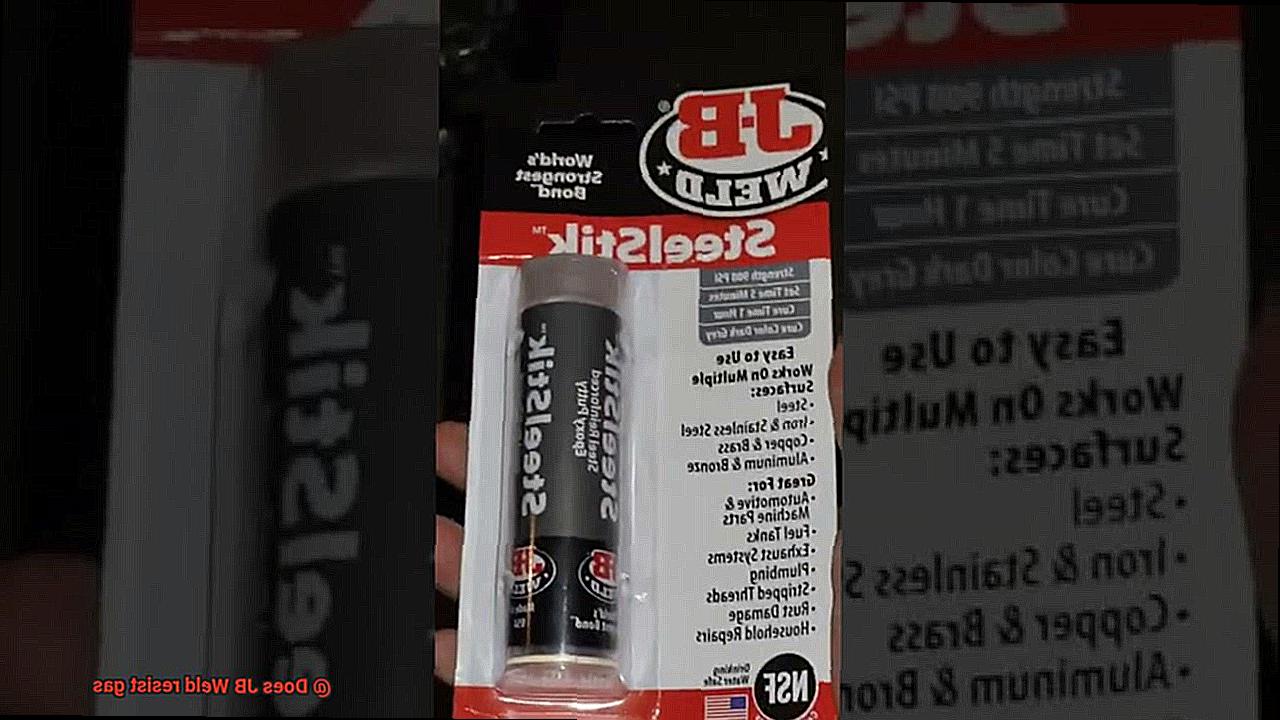
JB Weld, a formidable two-part epoxy adhesive renowned for its strength and versatility, has become a go-to choice for applications requiring gas resistance. With its ability to withstand the corrosive effects of various gases, JB Weld has found its place in a multitude of industries.
Automotive repairs benefit greatly from JB Weld’s gas resistance properties. From sealing exhaust systems to repairing gas tanks, this adhesive works wonders in restoring components exposed to fuels and gases. A simple application of JB Weld can swiftly mend a leak in your car’s exhaust system, allowing you to hit the road again with confidence.
Plumbers also rely on JB Weld when dealing with gas pipes. Whether it’s repairing leaks or securing joints, this mighty adhesive provides a reliable solution. No more fretting over dangerous gas leaks – with JB Weld, everything remains securely in place.
The manufacturing industry is yet another sector where JB Weld triumphs. In industrial processes where metal components are exposed to gases, JB Weld bonds them together with unparalleled strength and durability. It acts as a superhero protecting your equipment from the harmful effects of corrosive gases.
Even HVAC systems can benefit from JB Weld’s gas resistance properties. Whether it’s repairing or sealing components that are exposed to gases, JB Weld ensures that your HVAC system runs smoothly and efficiently.
From automotive enthusiasts to plumbing professionals and manufacturing experts, JB Weld is the adhesive of choice when it comes to applications requiring gas resistance. Its versatility and strength make it a reliable companion for all your bonding needs. Remember to prepare your surfaces thoroughly and apply the glue with patience and precision.
vUNJLzu4-rw” >
Conclusion
In conclusion, JB Weld is a true marvel of an epoxy adhesive. Its resistance to certain gases is nothing short of impressive. While not explicitly marketed as a gas-resistant adhesive, JB Weld has proven time and time again that it can handle the challenges posed by gasoline, diesel fuel, oil vapors, transmission fluid fumes, and exhaust gases without breaking a sweat.
When it comes to gas resistance, JB Weld truly shines in a variety of applications. Whether you’re dealing with automotive repairs, plumbing projects, manufacturing processes, or HVAC systems, this adhesive has got your back. It can effortlessly repair fuel tanks, seal exhaust systems with precision, secure gas pipes with unwavering strength, bond metal components exposed to corrosive gases like a boss, and ensure the smooth operation of HVAC systems like a well-oiled machine.
However, it’s important to keep in mind that highly corrosive or aggressive gases may eventually take their toll on the adhesive. While JB Weld is tough as nails against most gases out there, it’s always wise to exercise caution when using it in the presence of such formidable foes.
To truly maximize the gas resistance of JB Weld and unlock its full potential, proper surface preparation is absolutely crucial. Take the time to meticulously clean and degrease surfaces before applying this extraordinary adhesive. By doing so, you’ll ensure optimal adhesion and gas resistance that will stand the test of time. Additionally, consider factors such as temperature fluctuations (because let’s face it – gases don’t play nice when it comes to temperature), compatibility with different types of gas (because not all gases are created equal), bonding area size (because size matters), curing time adherence (because patience pays off), and chemical compatibility (because chemistry matters) – all these factors will contribute to achieving stellar results with JB Weld.
All in all, JB Weld’s versatility and sheer strength make it an absolute must-have for any project requiring gas resistance. So go ahead and tackle your next endeavor with confidence, knowing that JB Weld has got your back against even the most relentless gases out there.


